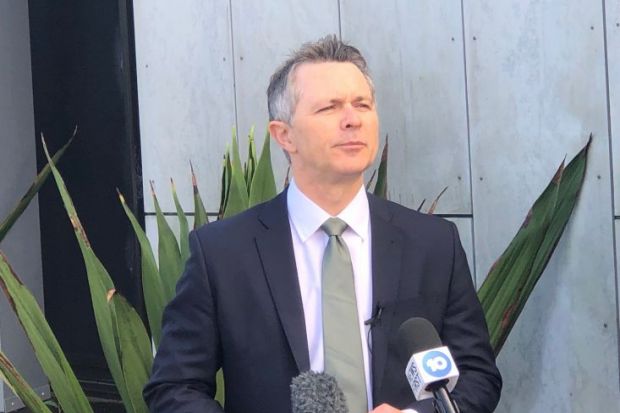Universities’ lack of visibility in Sydney’s sprawling western suburbs is part of the reason why far fewer locals have degrees than their inner-city peers, according to Australia’s education minister, Jason Clare.
“The evidence shows us that postcode is a massive barrier for young people getting [the] chance to go to university,” Mr Clare told journalists outside Canley Vale High School, where his name graces the honour board as dux – highest-ranking student – of 1989. “As a young fellow growing up here in Western Sydney…university felt like a place that was for someone else.
“When you drive around western Sydney, you see a lot of McDonald’s logos. You don’t see a lot of university logos. If you can’t see it, you can’t be it.”
Mr Clare has committed A$67 million (£35 million) to fund up to 34 “study hubs”, implementing the first recommendation from an interim report written by the Universities Accord review panel. He said the report, to be released in Canberra on 19 July, would contain other proposals for “immediate” action.
It will also outline the panellists’ thinking on the big challenges facing the higher education sector, which are likely to include research funding, students’ living costs and universities’ alignment with vocational training colleges. Mr Clare said the panel would invite further advice before handing him its final report at the end of the year.
The funding for study hubs will double the size of the Regional University Centres programme established by the previous government in 2018. The centres, designed for rural students who live far from university campuses, offer study spaces, computer facilities, high-speed internet and videoconferencing facilities as well as academic and administrative support, advice and counselling.
The scheme was pioneered two decades ago in the Western Australian town of Geraldton, about 400km north of Perth, and has since spread to more than 30 sites in every state and territory. The new funding extends the concept to outer suburban areas, where up to 14 hubs will be established through an independent selection process.
While Western Sydney University has recently opened a cluster of outer city campuses, including its Bankstown tower just 10km from Canley Vale, Mr Clare said local study hubs would help break down more barriers to higher education.
“Sometimes it’s a lack of transport,” he said. “Sometimes it’s the…long commute. Bringing a hub closer to where you live will…encourage people who otherwise might decide not to go to university at all. At a hub like this…they have the opportunity to go to any university, not just the university that might be 10 or 20km away.”
Charles Sturt University equity expert Sarah O’Shea supported the idea. “Some of our largest projected growth in future school-leavers is going to be in those outer suburban areas…that don’t have the transport or the infrastructure to get into the urban areas,” she said.
“Universities have to go into communities. They can’t continue to be places that students come to. [This] brings the university into the community. You get young people seeing universities; seeing people walking in and out of the building. I see that as making a lot of sense.”
The report’s cover bears a picture of an Australian spiny anteater, or echidna, thought to be a reference to bold or “spiky” ideas listed in an addendum.




